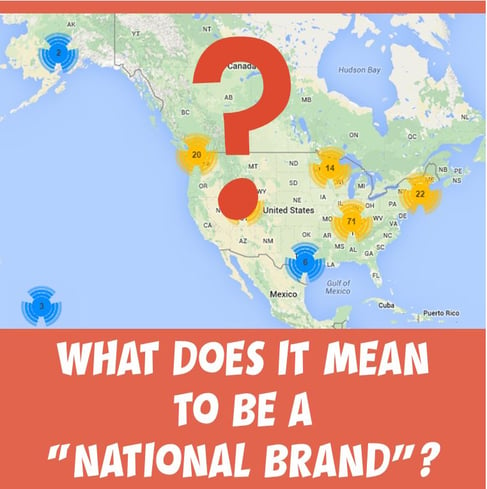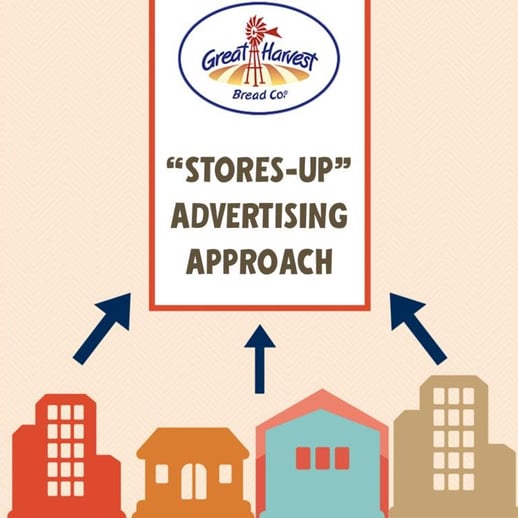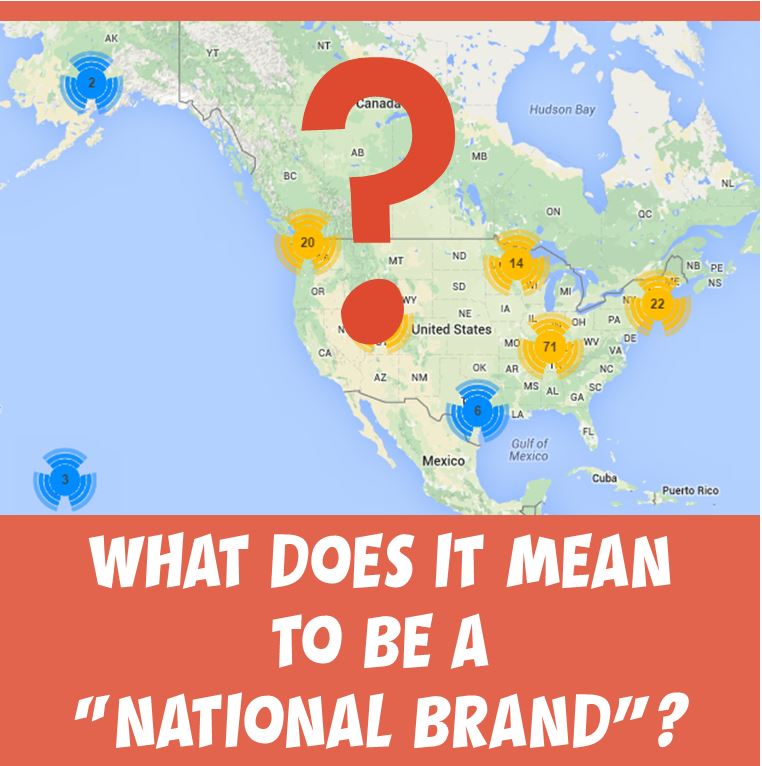Note: This is the second post in a four-part series about the Freedom Franchise. Read the first post which explores the intersection of Freedom and Franchise here.
 Many brands like to proclaim they wear a badge of honor by calling themselves a “National Brand.” There is no real qualification for this self-proclaimed honor. It doesn’t necessarily mean they have a presence in all 50 states ─ or even 10 states for that matter. In these days of online business what does it really mean anyway if you do sell in all 50 states? Better yet, does it make you a “Global Brand” if you sell to anywhere in the world?
Many brands like to proclaim they wear a badge of honor by calling themselves a “National Brand.” There is no real qualification for this self-proclaimed honor. It doesn’t necessarily mean they have a presence in all 50 states ─ or even 10 states for that matter. In these days of online business what does it really mean anyway if you do sell in all 50 states? Better yet, does it make you a “Global Brand” if you sell to anywhere in the world?
Call yourself whatever you want, but what really matters is how you approach the most effective means of advertising in support of your business ─ and not falling into the trap of making that decision based on a badge that you have awarded to yourself. Too many brands make the mistake of deciding that they must be a “national advertiser” if they are a “national brand,” and then opt out of doing something else that that may actually be the best way to grow their business.
For many brands, what I am saying is no great revelation. But the question of whether a national brand must be a national advertiser has clearly influenced the perception and growth potential at Great Harvest Bread Co. With over 200 stores spread across the United States ─ including Hawaii and Alaska ─ I think that we can safely say that we have a “national presence” without too much puffery. That said, given the geographical diversity of our stores (and fewer stores concentrated in the top 10 markets) “national advertising” options are less practical.
So what are we?
If Great Harvest is a national brand – but not a national advertiser – does that mean we are stuck in limbo? Not in the least. We still need to help drive new customers through our doors every day.
 To drive the business, we need to look at advertising from the perspective of “stores-up,” not “national-down.” That means looking at a number of different factors that include the $ volume of each store, how the stores cluster into “media markets,” and the cost of media in those markets to determine the most profitable approach going forward.
To drive the business, we need to look at advertising from the perspective of “stores-up,” not “national-down.” That means looking at a number of different factors that include the $ volume of each store, how the stores cluster into “media markets,” and the cost of media in those markets to determine the most profitable approach going forward.
This takes some legwork, and is not as easy as a blanket “macro proclamation” (such as you might expect in a national advertising campaign). What you find in the course of your research can be very surprising indeed. Markets that you might have thought were one store markets and “too small” may turn out to be the ones with the most profitable returns. Other markets that were “large” can surprisingly turn out to be affordable – depending on your store coverage.
The key is to know what your volume is, what the cost of advertising is, and having an accurate gauge on “how high is up.” And that is exactly what we have now done at Great Harvest. Through testing local advertising in a variety of markets, we know what can be gained in a market and are able to weigh that against the costs of local advertising. From there it is simple math to determine where we should be advertising.
And guess what? There are a whole lot of markets where we should be advertising locally across the country. . . . so in the end, are we a “National Advertiser” after all? What do you think?
Stay tuned for the next two posts in this series.
Learn more about the marketing benefits we offer to franchise owners:
If you enjoyed this post, you may want to read more about marketing from this author:
• Limited by Labels: When is a Franchise a Small Business?
• Hyper-Localization in Franchising: “Just Do It” Just Doesn’t Do It
• How to Succeed in Marketing: “Be the Ball”
• What is an Authentic Brand and Why Can it Succeed?





